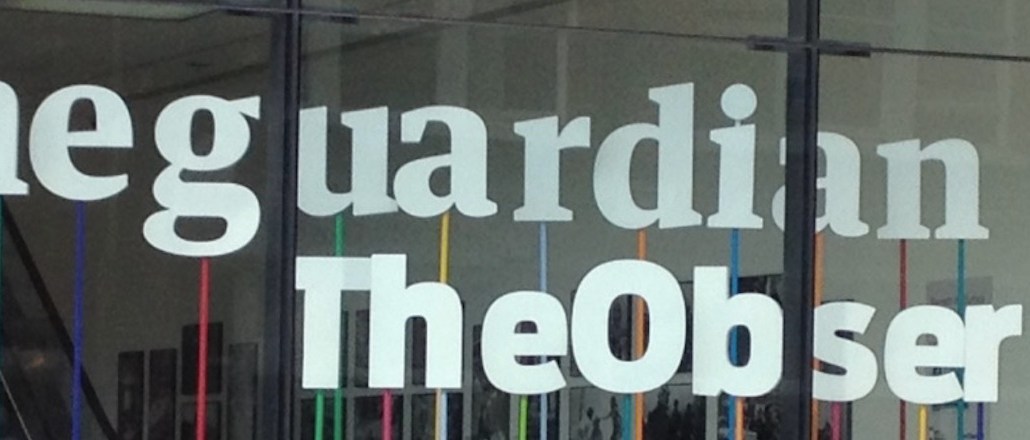Register by Jan 13 to save on passes and connect with marketers from Uber, Bose and more

The Guardian is reinforcing its “fewer is better” positioning with a product that guarantees advertisers will only be charged when their programmatically-served ads are seen by humans, not robots, and conform to “in-view” industry standards.
“The world doesn’t need more ad inventory or content, it needs better inventory and better content,” The Guardian’s commercial director Nick Hewat told Digiday. He added that this product, called “Assured,” reinforces the publisher’s commitment to providing quality inventory in the programmatic market. “We’ve drawn a line in the sand.”
Assured is being offered as part of the Guardian’s trading desk Response+, which buys off-site inventory, and has been developed over the last four months with ad verification firm Integral Ad Science.
Mindshare is one of the first agencies to go for the guaranteed service, which is now available to any advertiser running programmatic desktop display and mobile campaigns. The program is geared for video-rich display (but not pre-roll video) across the Guardian’s network, which it claims reaches 90 per cent of the U.K. population.
The idea is that advertisers need no longer worry that their media budget is being squandered on ads that aren’t seen, a concern that has heightened over the last year. Reports from the likes of Google estimate that over half of display ads aren’t seen at all. Recent research from ad verification firm Meetrics, showing a total £1 billion in media spend is falling through the cracks in the U.K. because such a large number ads aren’t seen.
Hewat said the term “premium” is bandied around by publishers regardless of the quality of the inventory. “It’s frustrating that everyone calls themselves premium now. Some use it as camouflage. This is one more effort from us to distinguish ourselves from our competitors, which is everyone these days,” he added.
However, he said that in spite of the bad players, there is a “flight to premium”, and it’s the publisher’s intention to “nail its colors to that mast.”
The Guardian is using Integral Ad Science data to verify the inventory it buys (via its demand-side platform AppNexus) off-site is fraud-free, in-view and in brand-safe environments.
Niall Hogan, managing director of Integral Ad Science, said the Guardian’s move to guarantee buys are viewable is a “big step” for the U.K. publishing market, which currently only sees pockets of successful viewablity-based trading.
Integral Ad Science’s Q3 report revealed publishers have an average rate of 52.8 per cent viewability for direct-to-publisher buys, which dropped to 44.3 per cent on exchange and network buys. “Based on those statistics, if they don’t get it right they are potentially writing off half the impressions they could sell, or half their monthly revenue. It’s a massive undertaking. To be the first to go out there and do that is impressive.”
Hogan added that there aren’t many other publishers as close to guaranteeing the same to their clients in the U.K., the closest being TripAdvisor.
A barrier to widespread viewablity-based trading is the discrepancies between how vendors measure what’s viewable. Today the Audit Bureau of Circulation has made progress in clarifying six industry-accredited viewability products from a mix of vendors including comScore.
Alice Whitmore, account manager of Affinity, Mindshare’s publishing arm, said viewablity and fraud are “huge” concerns in the programmatic trading market, and that the additional measures taken by The Guardian show the publisher’s commitment to helping ensure its clients campaigns are 100 per cent viewable and within safe environments.
“Taking these precautions certifies our campaigns will be of the highest quality, ensuring all impressions reach our target audience and minimizes any waste,” she added.
Although the “Assured” product has been created for the Guardian’s programmatic platform, it could tie in with campaigns which come out of its content studio Guardian Labs, which already taps into Response + products to drive people down the purchase funnel, according to Hewat.
More in Media

Why publishers are building their own creator networks
Publishers are forming creator networks to regain control, combat traffic declines, and reach audiences shifting toward influencers.

The accidental guardian: How Cloudflare’s Matthew Prince became publishing’s unexpected defender
Cloudflare’s day job is fending off botnets and nation-state cyberattacks, not debating how Google and other AI firms crawl publisher sites.

A timeline of the major deals between publishers and AI tech companies in 2025
Here’s a list of all the major deals signed between publishers and AI tech companies in 2025.





